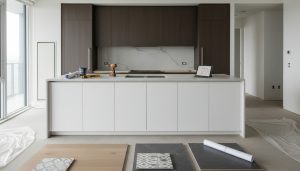How much negotiating room should I leave in my price?
Want buyers to ask for more? Here’s the exact negotiating room that wins deals — and why most sellers guess wrong.
Short answer: Leave 3–5% negotiating room in a balanced market. Adjust to 0–2% in a hot seller’s market and 6–10% (or more) in a buyer’s market. Use market data, not emotions.
Quick framework: Pricing strategy that works
- Target sale price = the minimum you will accept once negotiations finish.
- Negotiating room = percentage you can drop without hurting your net goal.
- List price = target sale price + negotiating room, adjusted for psychology and competition.
This is a simple formula that high-performing agents use to avoid overpriced listings and needless price cuts.
Why a fixed percentage matters for market value and price negotiation
Buyers expect to negotiate. If you list too low you leave money on the table. If you list too high, your home sits and loses perceived value. A 3–5% buffer hits the sweet spot in most markets: it gives buyers room to negotiate while keeping your listing competitive and attracting showings.

Real-world examples — concrete numbers
Example A — Balanced market (Toronto suburbs)
- Target sale price: $800,000
- Negotiating room: 4% = $32,000
- List price: $832,000
Result: Buyers make offers close to $800k, agent counters, and final sale finishes near the target.
Example B — Hot seller’s market (low inventory, multiple offers)
- Target sale price: $800,000
- Negotiating room: 1% = $8,000
- List price: $808,000
Result: Multiple offers lift the final price above target; small buffer avoids leaving money on the table.
Example C — Buyer’s market (high supply)
- Target sale price: $800,000
- Negotiating room: 8% = $64,000
- List price: $864,000
Result: Larger buffer gives negotiation flexibility and protects your minimum net.
Tactical steps to set your negotiating room (do this now)
- Check sold comps in the last 30–90 days nearby. Note list-to-sale ratios.
- Classify market: hot, balanced, or buyer’s. Look at days on market, active vs sold listings.
- Pick your target sale price (what you’ll accept after negotiation).
- Set negotiating room percentage based on market classification (0–2%, 3–5%, 6–10%).
- Price to attract buyers. Make small, strategic concessions in the contract, not in list price.
Negotiation psychology and listing timing
- First two weeks matter. Showings and offers cluster early. Price right to capture that window.
- Small visible concessions (closing flexibility, minor credits) can replace big price drops.
- A transparent counteroffer strategy makes buyers feel heard without sacrificing net proceeds.
Why experience matters
Local market nuance changes the percentage. That’s why you need a proven local agent who reads micro-trends and sets the exact negotiating room for your home. I’m Tony Sousa, a Toronto-area realtor. I help sellers choose the right buffer and craft the listing that turns showings into strong offers.
Want a precise negotiating-room number for your address? Email tony@sousasells.ca or call 416-477-2620. Visit https://www.sousasells.ca for case studies and market reports.





















